Art, ostracism in the work place, the complex and problematic process of diagnosis, coercive control and hegemonic masculinity
“Beware of the destructive effects of subtle rejection and ostracism. To truly build a diverse culture where unique knowledge and perspectives are unearthed, we must understand the perverse incentives that push people toward seeking likability instead of competence.” Todd Kashdan
“One of the points I’m making in my latest book [The Myth of Normal: Trauma, Illness and Healing in a Toxic Culture] is that this society places stress on families, tears communities apart, and isolates individuals. This leaves us with parenting situations where children’s attachment needs are not met. They’re left empty and hungry and seeking stuff from the outside. This book is about our individual health not being an isolated biological phenomenon. It reflects our relationships from conception onward, our community, and the entire culture.” Gabor Mate
“Perhaps travel cannot prevent bigotry, but by demonstrating that all peoples cry, laugh, eat, worry, and die, it can introduce the idea that if we try and understand each other, we may even become friends.” Maya Angelou
“Ignorance is not merely a deficiency of knowledge but, in addition, it positively apprehends reality in a distinctive way. And being a distorted mode of conception, it creates a view of the world that is in opposition to, and in conflict with, the actual way the world is.” Stephen Batchelor
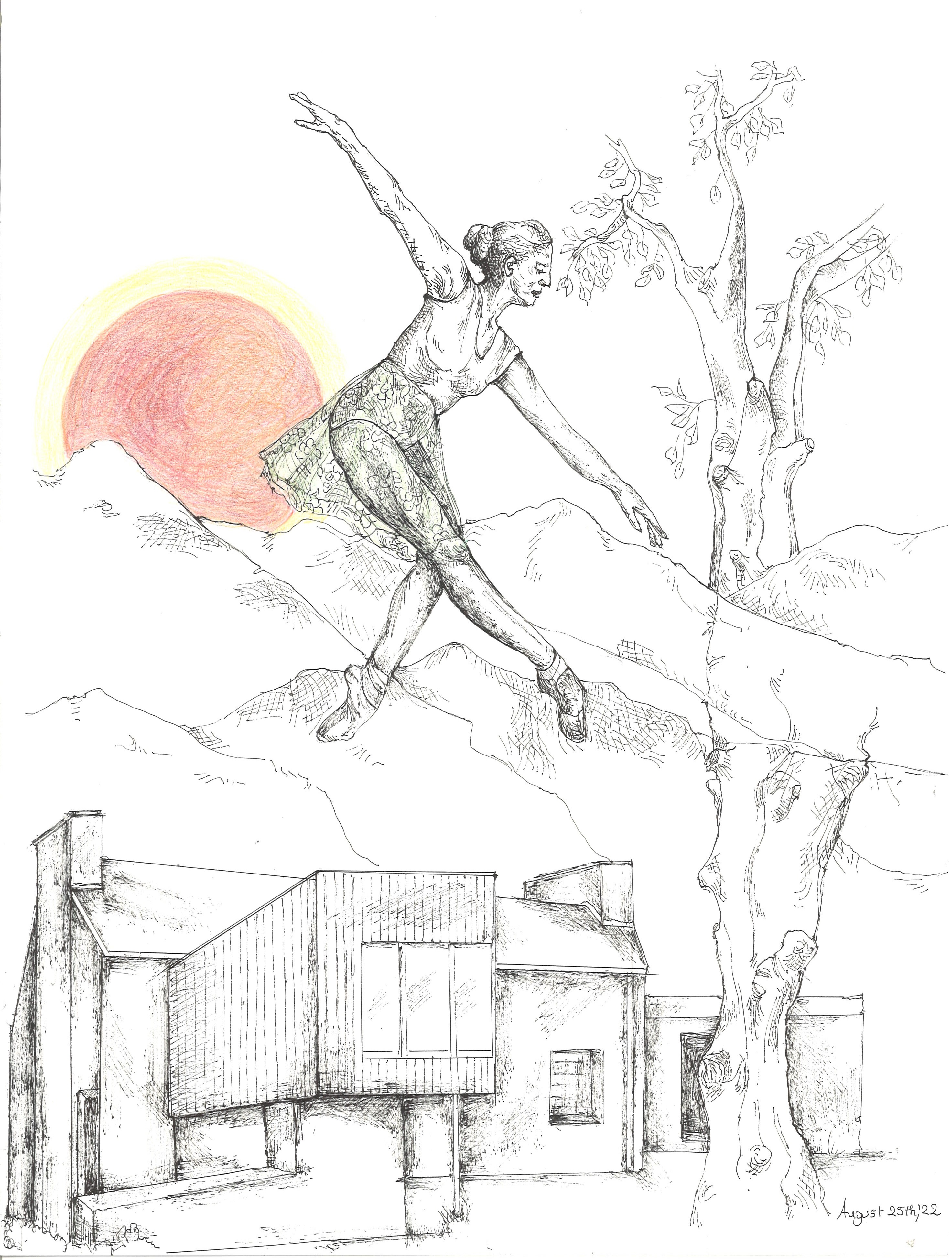
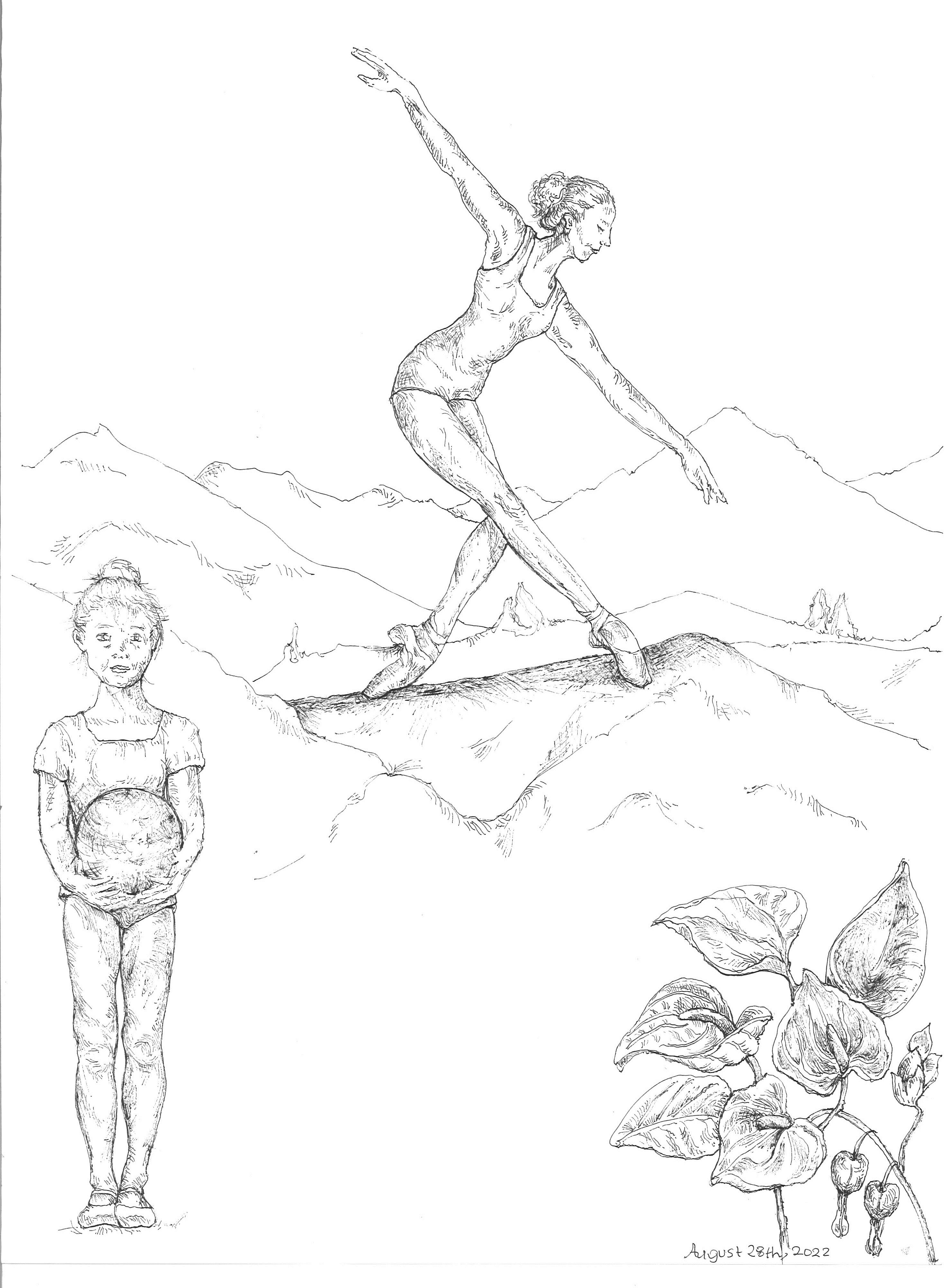

Today I’m posting a few more ink drawings and sharing ideas and links to material on topics I’ve been engaged with recently.
1. The first article [at: https://toddkashdan.substack.com/p/the-hidden-power-of-ostracism-at] is to some degree related to stereotyping that I wrote about in the previous post, and it is written by Todd Kashdan, PhD. The title of the article is: The Hidden Devastation of Ostracism at Work, and it’s about work place dynamics and the mechanics of ostracism in the work place often on the basis of underlying biases. Kashdan begins the piece reminding us of how few of us pass through childhood unscathed by incidents of exclusion. He writes: “It is easy to recall moments when we felt excluded by peers, and even easier when friends served as persecutors. While peers may have forgotten these events, I suspect you have not. Which raises the question: what is the impact of rejection within groups we affiliate with?”
He goes on to describe dynamics at work and how what might seem like meritocracy might be nothing more than a popular contest, which as he points out means that “people on the margins are rarely chosen, people with ideas outside of the mainstream are excluded from consideration. And people who look different, think different, or are wired differently are often defeated.” Kashdan suggests that this kind of ostracism works because it is often hard to detect or prove, but if the goal of a group is to maximize human potential, construct healthier cultures and produce fair decisions then allowing ostracism is “akin to intentionally handicapping group members.”
However, Kashdan notes that removing popularity allows for diversity and access to new voices and possibilities. One way to move beyond biases, according to economists, Bruno Frey and Lasse Steiner, is to remove applicants, for instance, who lack the requisite skills and with the remaining pool, randomly choose who gets the job, reward, promotion, invitation, and so on, Randomness safeguards against, sexism, racism, ageism, affinity toward others with ideologically similar beliefs, a preference for the physically attractive and fit. It also decreases the possibility of favoring people with certain characteristics. Kashdan writes: “We also know that some personality traits are more desirable, especially high levels of extraversion (as opposed to introversion), emotional stability (as opposed to someone with mental health difficulties)…….”
2. The second article [at: https://berkeley.us14.list-manage.com/track/click?u=a8079f1782122a9da1dec00db&id=920afed9bc&e=56fa618356] is also related to the workplace and it is titled: Four Ways to Help Your Coworkers Feel Respected, by Kristie Rogers, Beth. Schinoff and Nitya Chawla. It explores how lack of respect is driving people to quit their jobs and four ways that colleagues can help. They claim that people are quitting their jobs over disrespect because disrespect is the denial of someone else’s worth and it directly violates workplace norms of civility. Moreover, employees have a far easier time recalling and describing instances of disrespect or injustice than respectful or just treatment. Due to our negativity bias this is true for all of our experience. We have the tendency to remember the negative more than the positive. This both helps survival and hinders recovery and growth.
They distinguish two types of respect at work—the baseline level of respect that we are all owed as valued people and members of the workforce, and the respect that we earn for meeting or exceeding work expectations. It is suggested that respect should be shown frequently and consistently and to keep in mind the following four things:
* To respect the value of what coworkers do and to feel gratitude for everyone’s contribution.
* To respect coworkers’ individual job performance and give them positive feedback when they do well.
* To respect coworkers’ autonomy and to have trust in their worth and capacity to do the work
* To respect coworkers’ struggles and emotions and create a psychologically safe environment at work
3. Moving on to another topic, I’d like to share a link to this week’s Being Well podcast at: https://www.youtube.com/watch?v=AefzvuBGOSQ , where Forrest and Rick Hanson discuss the thorny and broad topic of diagnosis for mental issues, but many of the things touched upon here could also apply to physical illness. Recently, I heard a woman politician, actually, the Greek prime minister’s sister, talking about her cancer experience and why she went public about it in order to help eliminate stigma around illness. She mentioned how even in parliament many people keep silent about their serious health issues or struggles to avoid stigma and shame and possible career related repercussions. I think it is time that as a collective we began to compassionately accept our human condition, which involves being frail at times, grief, suffering and distress of all kinds, old age deterioration to one degree or another. By embracing our humanity and understanding our common humanity we may realize our human capacities for more empathy and compassion. Stephen Batchelor says: “To embrace suffering culminates in greater empathy, the capacity to feel what it is like for the other to suffer, which is the ground for unsentimental compassion and love.”
Some of the key points explored in the podcast are: the process used to give a diagnosis and the purpose of diagnosing. Rick and Forrest Hanson also discuss diagnosis through an evolutionary lens and situate it within cultural contexts. They touch upon the origins of mental health conditions, environmental and cultural effects and privilege. They also talk about differentiating between different diagnoses and the three subtypes of ADHD. Other aspects of diagnosis discussed here are: the emotional complexity of receiving a diagnosis and the need to pay attention to emotional experience as much as solving the problem, and the importance of mental health awareness, resources, and support from others. They focus on how we can all come to understand ourselves better, and be liberated by that understanding rather than burdened by it.
I think it’s worth listening to the episode because they discuss both the usefulness of pattern recognition, and also, the many problematic areas of the process of diagnosing, especially mental health issues. When I was doing a clinical programme the emphasis was heavy on de-contextualized psychopathology with very little recognition of trauma and circumstances, and real interest in causality or critical evaluation. On the podcast it is suggested that the structure that’s used in mental health, in the DSM, is not based on a theory as to the causes of a condition or even the ‘how’. It’s basically a symptoms description, based on just the ‘what’. However, it is also suggested that the best way to improve mental health is to get families and children out of poverty, and that people’s capacity to ease and reduce their diagnoses is very situated in frameworks of privilege and financial opportunity. So, I think the points made here could expand our view of the whole process of diagnosing to serve all parties.
Points made during this talk include the probabilistic, messy and complicated nature of diagnoses and the dysphoria that arise when people are placed into boxes. As Rick Hanson says: “…. we don’t want to quickly snap them into some little box, people hate being boxed, I certainly do, as you know, probably even though I lived out of a box on wheels (camper van) for the last month, but it was liberating, it was a liberating box.” They point out that fact that diagnosis is situated in a medical context of pathology, “which is a whole can of worms, provides a portal into healthcare, and reimbursement, and money, and doctors.” They make the point that various so-called pathologies are actually adaptive in certain circumstances, particularly for survival. Seen through an evolutionary framework, for instance, “the upper 5% of the range of temperament in terms of, let’s say, hyperactivity and stimulation-seeking…. they’re (these kids are) bright, they’re creative, they’re vital in their body, they’re looking for a stim…… In a hunter-gatherer band, they would be a wonderful asset, in most of the situations humans have lived in until the last several decades around the world, their nature would be very adapted to their situation, but sitting still in a conventional first grade classroom for long periods of time is really hard for that kid. So, then you move away from a moralizing pathology into something that’s much more objective and physical that can be really freeing to the person, and then we can focus on what could be helpful to this kid.”
They refer to the influence of culture and historical era in relation to how we view experiences, and to the fact that people’s biology might be set up a little differently and then experience might have a bigger impact. They mention the problematic nature of diagnosis basically being a box score, a symptom checklist and on the problematic nature of the word “functioning”, which will be influenced by the beliefs and experiences of the person doing the evaluation. All in all, mental health diagnosis is extremely subjective.
The so-called ADHD spectrum is also discussed. Rick Hanson says: “I think that there should be no final ‘D’. I don’t think being highly distractible, stimulation-seeking, and/or impulsive is inherently a disorder, it’s highly adaptive and it’s been highly adaptive… for millions of years.” They use this diagnosis to show some of the existing problems around diagnoses like misdiagnosing and under and over diagnosing. For instance, white children are diagnosed with ADHD more often than black children and these “lower rates of diagnoses in non-white children are more than compensated for by disproportionately high rates of a diagnosis of conduct disorder” in black children. Also, men are diagnosed more often than women and this raises the question: Is this due to biological differences or could it be that boys are being over-diagnosed and girls are being under-diagnosed because they are acculturated differently?
Gabor Mate, who’s a physician, adds an additional lens through which to view conditions. He suggests that he has found that “all mental health conditions, or so-called mental diseases, and most chronic physical health conditions, are responses to unresolved pain. They are responses to life.” One well known example is Maya Angelou’s muteness for five years after the occurrence of certain very traumatic events in her childhood and how love and support allowed her to become Maya Angelou. Dr Mate continues: “What’s the hallmark of ADD? Tuning out, absent-mindedness. It’s a coping mechanism. Contrary to medical nonsense people put forward, it is not a genetically inherited disease, but a response to early stress. The more sensitive you are, the more difficult it can be to cope with your environment. Early coping mechanisms, however, can become sources of problems later.” In relation to the link between technology and ADD he says: “We had these problems before we had technology. Technology makes it worse because it’s addictive and it interferes with human relationships. It’s a double-edged sword because it allows a lot of information to be available to people, but it also makes available lies, disinformation, fantasy, and venom.” (https://www.psychologytoday.com/gb/blog/the-seekers-forum/202201/the-myth-normal-speaking-gabor-mat)
Finally, Rick Hanson makes reference to the Rorscharch inkblot test. The inkblots are like those some of us might have made at school during art classes. I’ve always thought of the Rorscharch as something to use in therapy or elsewhere to facilitate exploration of one’s inner world or current pre-occupations. It could also reflect the richness of one’s imagination and could be useful in stimulating interesting discussions or free-association; however in terms of it been used as an assessment tool I have always thought that it could be highly subjective and dependent on evaluators’ ideas, biases and inner worlds. He provides an example of his own experience with the test as part of a licensing exam he had to take, and his realisation that there are many people who have been given a Rorscharch to decide what their sentencing should be in a criminal system, or whether they should be continued to be locked up based on those kind of findings. He concludes that “it’s really important to be very careful with the assessments that we use, and very respectful, and take a lot of stuff into account.”
Image of the Rorscharch inkblot test
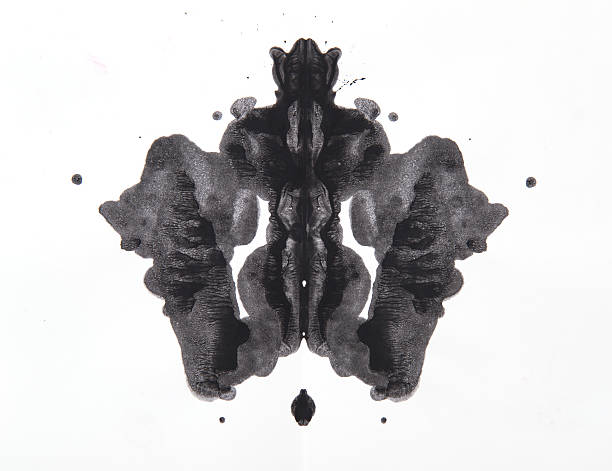
4. I’ve just completed a short but very informative Future Learn introductory course on Coercive Control in relationships and family systems. It contains useful information in understanding the basics of coercive behaviours situated in a broader social environment that often values and reinforces such behaviours. Dissemination of this kind of information can both awaken and empower those on the receiving end of coercive control, and also, influence men resorting to this way of being in relationships, and society more broadly, to disrupt and heal dysfunctional ways of being.
In the course they make the useful distinction between legitimate power and coercive control in relationships. Legitimate power could be described as the capacity to influence, inspire, motivate, and invigorate and where the rewards are shared proportional to effort. Coercive power, on the other hand, is based on manipulation, threats, exploitation, and selfishness where the rewards and benefits are not shared regardless of effort. It is supported that this distinction is important because often controlling tactics go unnoticed and requests and demands can represent the social expectations of women. In other words, “coercive control is about exploiting gendered roles (Stark, 2007) with the primary aggressor using the collective, ‘normal’ roles of wives and mothers as leverage.” Researcher Evan Stark (2007) has used the term ‘liberty crime’ to describe the actions associated with coercive control and thereby to diminish a partner’s autonomy and space for action. In the UK coercive control is now recognised as a criminal act. Stark suggests that coercive control occurs in public settings and is not limited to “behind closed doors” behaviour that restricts the liberty and free choice of the victim, but because it goes on in the prevailing environment of gender inequality, this ‘management’ appears normal or justified.
Interestingly, studies on coercive control have developed models using words like “webs” or “cages” to conceptualise these experiences. Torna Pitman, who conducted a study in 2017 – drawing on interviews on 30 women – shed light on some common tactics, attitudes and beliefs of men who use coercive control. “Presenting a model (The Trap) in the familiar circular design, the respondents in this study placed at the core (or centre) their partner’s sense of entitlement, being superior and having an adversarial (combative) attitudinal style. All their controlling tactics and behaviours rotate around this core. According to Pitman (2017) it is from the sense of always being right and unquestionably correct, that the demands for compliance flow” (cited in course material)
One helpful conceptual model, Social Entrapment, for partner violence was originally developed by James Ptacek in 1999. The basic elements of the model are:
(a) the social isolation, fear, and coercion that the predominant aggressor’s coercive and controlling behaviour creates in the victim’s life
(b) the indifference of powerful institutions to the victim’s suffering
(c) the exacerbation of coercive control by the structural inequities associated with gender, class, race, and disability (Tolmie, et al 2018).
Another conceptual model is: Hegemonic Masculinity. Hegemonic masculinity refers to the ideals and practices that denote the most prized ways of being a man in any given context. When engaging men using these tactics, some questions that might be helpful for professionals to gauge how controlling they may be are:
“How important is fairness to you?” / “How has winning become so important to you in your relationship?”
And yet another model is the Duluth model presented in the graph below. I’ve referred to this in an older post.
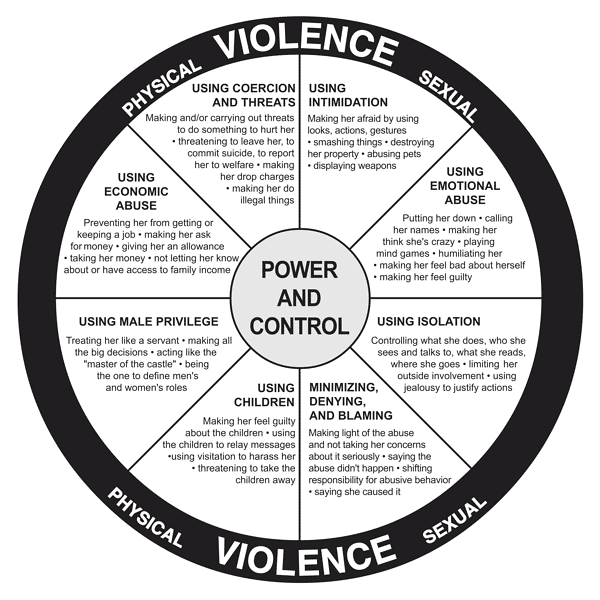
In addition, research suggests that on the shaping of attitudes and behaviours of men who use violence “solely focusing on individual factors in men’s lives (e.g., attitudes, beliefs and investment in gendered roles) does not properly account for all the ‘structural systemic, organisational, community, interpersonal and individual levels of society’ (Our Watch 2019) that privileges men. The term hegemonic masculinity coined by Raewyn Connell (2005) in her studies of masculinity, mentioned above, is used to describe the expectations and constraints that shape men to act or perform to meet these standards, which include: emotional control; primacy of work / career and success; control over women; aggression; stoic individualism; toughness; distain for homosexuality; competitiveness.
All these markers of masculinity are unreasonable and restrictive and they suit only very few males; however, they “are often reflected and reinforced socially, structurally, and institutionally as the expected construct of maleness. Most men fall short on scales of measurement and comparisons and must negotiate the shame of not meeting these impossible expectations, particularly if the failure is public and known/seen by their valued group….” (Our Watch, 2019).Men differ in how invested they are in belonging to and taking advantage of, the dominant masculine model and the degree which they are willing to forgo benefits such as intimacy, closeness, nurturing, connection, and emotional capacity, for example, which are all fall outside the Man ‘box’ of acceptable masculine emotions. In many contexts to be outside the man box might be a dangerous place emotionally, psychologically even physically, as the dominant (alpha) males and culture reinforce the expectations of the group. Researcher Brene Brown (2017) who emphasizes the strong relationship between shame and violence, suggests that there’s a message that runs through many men’s lives of ‘do not be perceived as weak’,
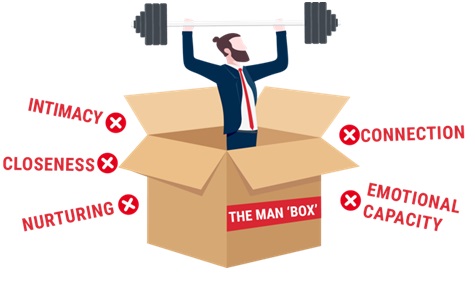 As I end this part and post today, I’d like to add that, as emphasized in the course, understanding the origins of coercive behaviour and aggression does not excuse the behaviours. Many men have been subjected to the same constraining or limiting beliefs about masculinity and have found ways to negotiate hegemonic masculinity, to heal, confront their traumas, take responsibility and to let go of the privileges that hegemonic masculinity provides. Talking about these issues and disseminating information can awaken us collectively to better ways of relating, and also, exert pressure for structural changes to take place.
As I end this part and post today, I’d like to add that, as emphasized in the course, understanding the origins of coercive behaviour and aggression does not excuse the behaviours. Many men have been subjected to the same constraining or limiting beliefs about masculinity and have found ways to negotiate hegemonic masculinity, to heal, confront their traumas, take responsibility and to let go of the privileges that hegemonic masculinity provides. Talking about these issues and disseminating information can awaken us collectively to better ways of relating, and also, exert pressure for structural changes to take place.
